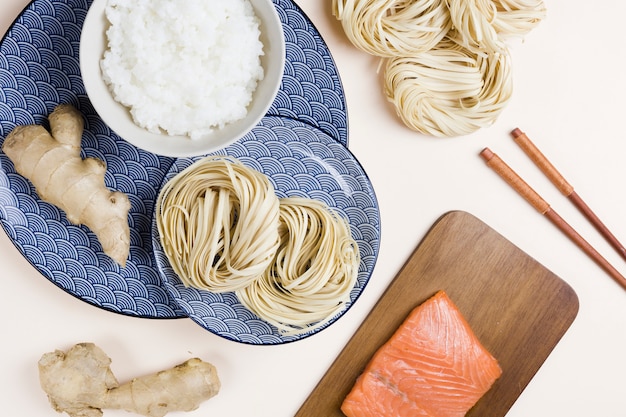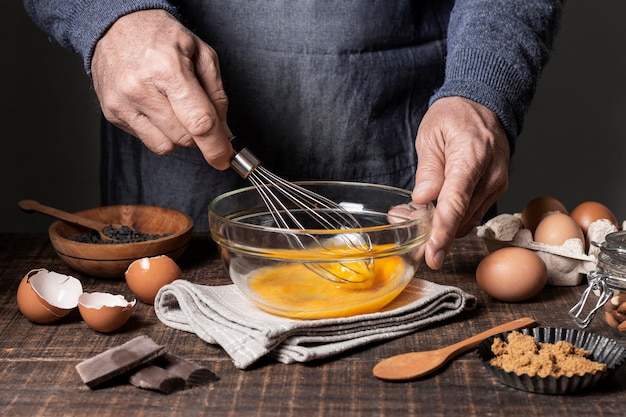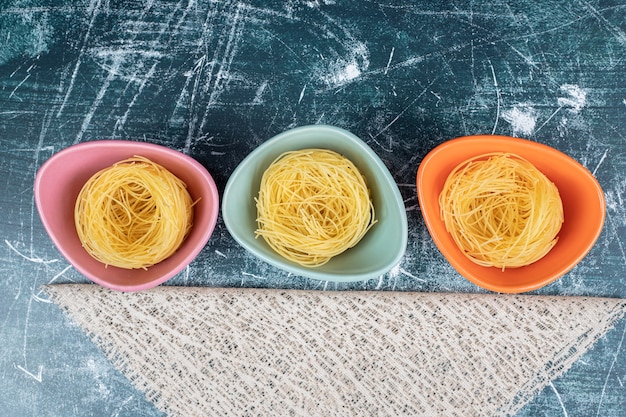As the leaves start to turn and the air gets a chill, I know it's time to embrace the flavors of fall. And for me, that means butternut squash. It's a staple in my kitchen, but this year, I'm going beyond the traditional mashed version and diving headfirst into the world of butternut squash noodles!
I'm a self-proclaimed pasta lover, but let's be real - it's not always the healthiest choice. That's why I was so excited to discover butternut squash noodles. They're a delicious and nutritious alternative that can be used in all sorts of dishes. I'm talking creamy pesto sauces, spicy stir-fries, and even hearty soups - the possibilities are endless!
And don't forget the health benefits. Butternut squash is a true nutritional powerhouse, loaded with vitamins A and C, potassium, and fiber. Plus, it's low in calories and fat, making it a guilt-free way to indulge in a satisfying and flavorful meal.
(Part 1) Butternut Squash Noodles: The Basics

The best part? Making butternut squash noodles is incredibly simple. You don't need any fancy gadgets, just a sharp knife and a little bit of time. Let me walk you through it, step-by-step.
Choosing the Right Squash
Picking the right butternut squash is crucial. Look for one that feels heavy for its size, with firm flesh and a deep orange colour. Avoid any with soft spots or bruises. A good squash is a sign of great noodles to come!
Prepping the Squash
Once you've got your perfect squash, it's time to prep it. Start by trimming the ends. Then, slice it in half lengthwise. Use a spoon to scoop out the seeds and any stringy bits. You'll be left with two smooth halves, ready for the next step.
Making the Noodles
Now for the fun part: making the noodles! You can use a vegetable peeler or a spiralizer. If you're using a peeler, gently shave long, thin strands from the squash. If you have a spiralizer, simply feed the squash through it to create beautiful, uniform noodles.
If you don't have a spiralizer, don't worry! You can still make delicious noodles by using a sharp knife to carefully slice the squash into thin ribbons. It might take a little longer, but the results are just as tasty.
(Part 2) Butternut Squash Noodle Recipes: My Favourites

Over the past few months, I've been experimenting with different butternut squash noodle recipes, and I've found a few that are absolute winners. They're easy, delicious, and perfect for any occasion.
1. Butternut Squash Noodles with Creamy Pesto Sauce
This is a classic recipe that never disappoints. The creamy pesto sauce perfectly complements the sweetness of the butternut squash, and it's incredibly easy to put together.
- Cook the Noodles: Steam the butternut squash noodles for about 5-7 minutes, or until they're tender but still have a bit of bite.
- Make the Pesto: While the noodles are steaming, combine 1/2 cup of fresh basil leaves, 1/4 cup of pine nuts, 1/4 cup of grated Parmesan cheese, 1 clove of garlic, and 1/4 cup of olive oil in a food processor. Blend until smooth and creamy.
- Assemble the Dish: Toss the cooked noodles with the pesto sauce and season with salt and pepper to taste. Serve immediately, while the pesto is still warm and the noodles are fresh.
2. Butternut Squash Noodles with Spicy Peanut Sauce
For those who love a bit of heat, this spicy peanut sauce recipe is a must-try. It's full of flavour and has just the right amount of kick.
- Cook the Noodles: Steam the butternut squash noodles for about 5-7 minutes, or until tender but still slightly firm.
- Make the Peanut Sauce: Combine 1/2 cup of peanut butter, 1/4 cup of soy sauce, 2 tablespoons of rice vinegar, 1 tablespoon of honey, 1 tablespoon of sesame oil, and 1 teaspoon of red pepper flakes in a bowl. Whisk until smooth and creamy.
- Assemble the Dish: Toss the cooked noodles with the peanut sauce and garnish with chopped peanuts and green onions. The crunch of the peanuts and the fresh bite of the green onions complement the sauce beautifully.
3. Butternut Squash Noodles with Roasted Vegetables and Herbs
This recipe is perfect for a cozy fall dinner party. The roasted vegetables add a beautiful depth of flavour to the dish, and the herbs provide a touch of freshness. It's a winning combination of textures and tastes.
- Prepare the Vegetables: Preheat the oven to 400°F (200°C). Chop 1 medium sweet potato, 1 medium zucchini, and 1 red bell pepper into bite-sized pieces. Toss them with olive oil, salt, and pepper.
- Roast the Vegetables: Spread the vegetables on a baking sheet and roast for 20-25 minutes, or until they're tender and slightly caramelized. The caramelization adds a sweetness that pairs perfectly with the butternut squash noodles.
- Cook the Noodles: Steam the butternut squash noodles for about 5-7 minutes, or until tender but still slightly firm.
- Assemble the Dish: Toss the cooked noodles with the roasted vegetables, a handful of chopped herbs (like rosemary or thyme), and a drizzle of balsamic vinegar. Serve immediately, while the vegetables are still warm.
(Part 3) The Benefits of Butternut Squash Noodles

Beyond their deliciousness, butternut squash noodles offer a range of health benefits. They're a guilt-free way to enjoy a nutritious and satisfying meal.
1. Nutrient-Rich
Butternut squash is packed with vitamins and minerals. It's a great source of vitamin A, which is essential for healthy vision, skin, and immune function. It's also a good source of vitamin C, an antioxidant that helps protect your cells from damage. And if that wasn't enough, it's also rich in potassium, which is important for maintaining healthy blood pressure.
2. Low in Calories and Fat
Butternut squash noodles are naturally low in calories and fat, making them a healthy alternative to traditional pasta. This means you can enjoy a hearty and filling meal without the guilt.
3. High in Fiber
Butternut squash is a good source of dietary fiber, which helps regulate digestion and promotes a healthy gut. Fiber also helps you feel full and satisfied after eating, which can be helpful if you're trying to manage your weight.
(Part 4) Butternut Squash Noodles: A Versatile Choice
One of my favorite things about butternut squash noodles is how versatile they are. They can be used in a variety of dishes, from simple salads to complex main courses.
1. Main Courses
Butternut squash noodles make a fantastic base for all sorts of main courses. You can toss them with creamy sauces, spicy stir-fries, or even hearty stews.
2. Salads
I love adding butternut squash noodles to salads for a bit of texture and sweetness. They pair well with grilled chicken, roasted vegetables, and creamy dressings.
3. Soups
Butternut squash noodles can also be added to soups for a touch of sweetness and a satisfying texture. Try them in a creamy butternut squash soup or a hearty vegetable soup.
(Part 5) Tips for Success
Here are a few tips to help you create the perfect butternut squash noodles every time:
1. Don't Overcook the Noodles
Butternut squash noodles cook quickly, so it's important not to overcook them. Overcooked noodles will become mushy and lose their texture. Aim for tender but still slightly firm noodles.
2. Use a Sharp Knife or Spiralizer
To ensure your noodles are thin and even, use a sharp knife or a spiralizer. A dull knife will result in uneven noodles, and a spiralizer will help you create perfect noodles every time.
3. Season the Noodles Generously
Don't be shy with the seasoning! Butternut squash noodles pair well with a variety of seasonings, from simple salt and pepper to more complex spice blends. Experiment and find what you like best.
4. Experiment with Different Toppings and Sauces
There are no limits when it comes to toppings and sauces for butternut squash noodles. Get creative and experiment with different flavours and textures. You can even try adding a sprinkle of cheese, chopped nuts, or fresh herbs to your noodles.
(Part 6) Storing and Reheating
Once you’ve made your butternut squash noodles, you’ll want to make sure you store them properly to keep them fresh and delicious. Here’s how:
1. Storing
To store your cooked butternut squash noodles, place them in an airtight container in the refrigerator for up to 3 days. The texture might change slightly, but they’ll still be delicious.
2. Reheating
You can reheat butternut squash noodles in the microwave, oven, or stovetop.
- Microwave: Heat the noodles in a microwave-safe dish for 30-60 seconds, or until heated through.
- Oven: Preheat to 350°F (175°C) and bake for 10-15 minutes, or until heated through.
- Stovetop: Heat the noodles in a saucepan with a little bit of water or broth over medium heat for 5-7 minutes, or until heated through.
(Part 7) Butternut Squash Noodles: A Family Favourite
Butternut squash noodles have become a family favorite in our house. My kids love them, and I love knowing they're getting a healthy and delicious meal. They're so versatile, and I can always find a new way to cook them.
One of my favourite things about butternut squash noodles is how they bring people together. Whether it's a casual weeknight dinner or a special occasion, they're always a hit. And they're perfect for sharing. I love watching my family enjoy them, and it always makes me feel good knowing I've created something delicious and healthy.
(Part 8) FAQs
Here are some of the most frequently asked questions about butternut squash noodles:
1. What’s the best way to store butternut squash?
Butternut squash can be stored in a cool, dry place for up to 2 months. If you want to store it longer, you can freeze it. To freeze butternut squash, cut it in half, remove the seeds, and peel it. Then, cut it into cubes and blanch it for 2-3 minutes. Drain the squash and let it cool completely before freezing it in a freezer-safe bag.
2. What can I do with leftover butternut squash noodles?
You can use leftover butternut squash noodles in all sorts of dishes! Try adding them to soups, stews, salads, or even stir-fries. They also make a great base for a quick and easy lunch or dinner.
3. Are butternut squash noodles gluten-free?
Yes, butternut squash noodles are naturally gluten-free. This makes them a great option for people with gluten sensitivities or celiac disease.
4. Are butternut squash noodles healthy for weight loss?
Butternut squash noodles can be part of a healthy weight loss diet. They're low in calories and fat, and they're a good source of fiber, which can help you feel full and satisfied after eating.
5. How do I make butternut squash noodles crispy?
To make butternut squash noodles crispy, you can roast them in the oven. Preheat the oven to 400°F (200°C), toss the noodles with olive oil and salt, and spread them out on a baking sheet. Roast for 15-20 minutes, or until crispy.
(Part 9) Final Thoughts
Butternut squash noodles are a delicious and versatile way to enjoy this fall favourite. They're easy to make, packed with nutrients, and perfect for any occasion. So next time you’re looking for a healthy and flavourful meal, give butternut squash noodles a try. You won’t be disappointed!
I hope this article has inspired you to try butternut squash noodles! If you have any questions or tips to share, please leave a comment below. I'd love to hear from you.
Everyone is watching

Corn on the Cob: The Ultimate Guide to Perfectly Cooked Ears
Healthy MealsAh, corn on the cob. Just the name evokes images of sunny days, barbecues, and that sweet, juicy flavour that ...

Scallops: The Ultimate Guide to Perfect Cooking
Healthy MealsAh, scallops. Those delicate, sweet, and utterly delicious morsels of the sea. They hold a special place in my...

Spaghetti Squash: The Ultimate Guide to Cooking and Serving
Healthy MealsRemember that time you saw spaghetti squash at the supermarket, looking all bumpy and strange, and thought, "W...

Salmon Cooking Times: Perfect Guide for Every Recipe
Healthy MealsLet me tell you, cooking salmon is an art form. It's all about getting that perfect balance: juicy and tender,...

Ham Cooking Time: How Long to Bake, Smoke, or Boil a Delicious Ham
Healthy MealsAh, ham. It's a classic, isn't it? A real crowd-pleaser, especially around holidays. And when done right, it'...
